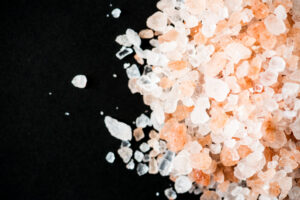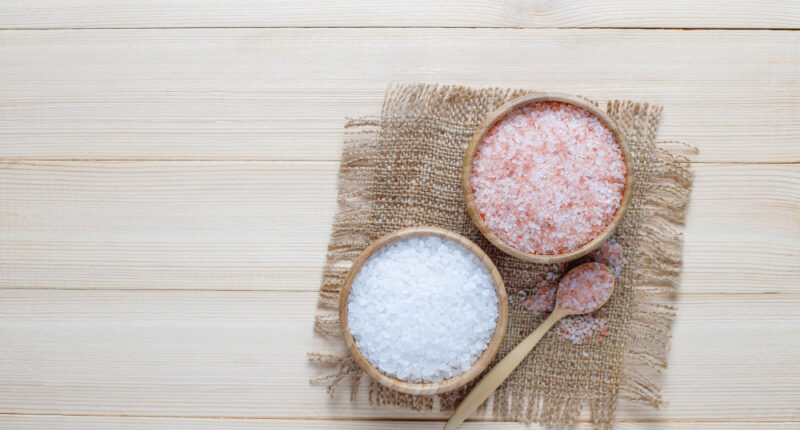Salt is a fundamental ingredient in cooking, essential for flavoring and preserving food. However, not all salt is created equal. The two most commonly used types are sea salt and table salt, each with distinct characteristics, benefits, and drawbacks. Understanding the differences between sea salt and table salt can help you make informed decisions about which to use in your diet.
What is Sea Salt?
Sea salt is created by evaporating seawater, resulting in a minimally processed product that retains essential trace minerals like magnesium, potassium, and calcium. These minerals can contribute to the subtle differences in flavor and color seen in various types of sea salt, such as Himalayan pink salt, Celtic sea salt, and Fleur de Sel.
Characteristics of Sea Salt
Texture: Sea salt usually has a more robust texture than table salt. The larger crystals can add a crunchy texture to dishes when used as a finishing salt.
Mineral Content: Due to its minimal processing, sea salt contains trace minerals that are not present in table salt. These minerals can contribute to a more complex flavor profile.
Flavor: Sea salt’s unique flavor is influenced by trace minerals and the harvesting method, creating a distinctive taste that reflects its source.
Appearance: Sea salt can be of various colors, from white to pink to grey, depending on its mineral content and the location from which it was harvested.
What is Table Salt?
Table salt, also known as iodized salt, is heavily processed to remove impurities and minerals. Did you know that it is usually extracted from deep underground salt deposits? Additives such as iodine (to prevent iodine deficiency) and anti-caking agents (to prevent clumping) are often added during processing.
Characteristics of Table Salt
Texture: Table salt has a fine, uniform texture that dissolves quickly, making it ideal for baking and precise recipes.
Purity: The extensive processing of table salt removes most minerals, leaving nearly pure sodium chloride.
Additives: Table salt commonly contains added iodine, essential for thyroid function, and anti-caking agents to ensure it flows freely.
Flavor: The absence of trace minerals means table salt has a clean, straightforward salty taste.
Health Implications
Both sea salt and table salt contain similar amounts of sodium by weight, which is crucial to consider for maintaining a healthy diet. Consuming too much sodium is associated with an increased risk of high blood pressure, heart disease, and stroke. The main differences lie in their mineral content and processing methods.
Sea Salt
Mineral Benefits: Although they are in small amounts, the trace minerals in sea salt, such as magnesium and potassium, can offer additional health benefits.
Lower Sodium Intake: The coarser texture of sea salt means that a teaspoon of sea salt has slightly less sodium than a teaspoon of table salt due to the larger crystal size.

Table Salt
Iodine: Adding iodine to table salt helps prevent iodine deficiency, which can lead to thyroid issues and developmental problems in children.
Consistency: Table salt’s fine texture and uniformity make it perfect for precise baking and recipes.
Culinary Uses
The choice between sea salt and table salt also depends on the culinary application.
Sea Salt
Finishing: Sea salt’s coarse texture and complex flavor make it ideal for sprinkling on finished dishes, such as grilled meats, salads, and roasted vegetables.
Cooking: Sea salt can be used in cooking, but its coarser texture may not dissolve as quickly as table salt, potentially affecting the consistency of some dishes.
Table Salt
Baking: Table salt’s fine texture ensures it disperses evenly throughout doughs and batters, making it the preferred choice for baking.
General Cooking: Table salt’s quick-dissolving nature suits most cooking applications, from boiling pasta to seasoning soups.
Conclusion
Both sea salt and table salt have their unique characteristics and uses. Sea salt is not just a seasoning; it is a source of essential trace minerals that can enhance the flavor and texture of your dishes. Elevate your culinary creations with sea salt’s distinct taste and gourmet appeal. With its fine texture and added iodine, table salt is ideal for baking and general cooking. Understanding the differences can help you choose the right type of salt for your culinary and health needs. Moderation is vital to maintaining a balanced diet, regardless of which type of salt you prefer.









